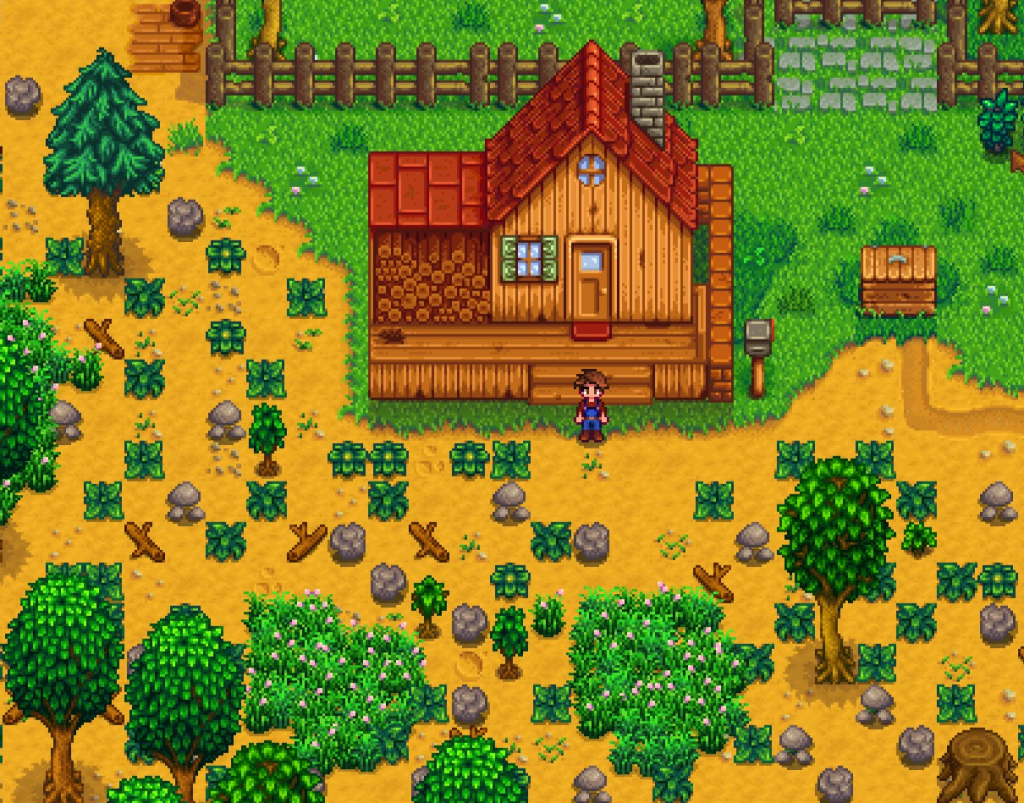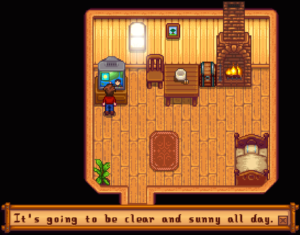Stardew Valley Guide – Starting Out
It’s been some time since I have posted. My excuse is that I have been busy playing Stardew Valley on the Nintendo Switch. After playing through countless hours of farming, fishing, and foraging, I’ve decided to make a nice little guide for those new to the game, or those who are looking for a few pointers. Without further ado, read on for my Stardew Valley guide for starting out. Good Luck!
Watch some TV every morning
Your grandpa left you with a cozy little cabin complete with an old TV. Despite the game’s message of being one with nature and living off the land, you should dedicate every morning to watching some TV channels. There are some helpful shows that give you some insight as to how you should plan your days.
The weather report is the most important one, as this will tell you when there could be some rain coming. Since rain automatically waters your crops, you’ll save on energy, and have more time for other activities. The other shows are helpful, but not as much as the weather in the beginning.
The fortune teller channel describes the amount of “luck” you will have that day. In other words, it indicates how often the randomly generated elements will work in your favor. An easy example of this is in the mines, where breaking rocks has a chance of revealing a ladder to the next level.
Queen of Sauce and Livin’ Off The Land are two other helpful shows. The Queen of Sauce will teach you a cooking recipe every so often, which will come in handy once you have upgraded your house to have a kitchen. Livin’ Off the Land is a godsend, revealing information that would otherwise require a walkthrough or a newbie guide (like this one!).
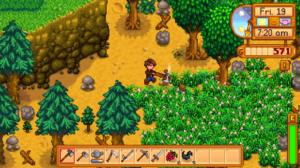
Clear some space!
When you first start the game, your farm is heavily overgrown. In the beginning, you will not have very much money to start buying everything you need to get a farm going. Until you have enough money, it pays to clear a bit of your farm every morning. That way, you will have some space to use once you finally get some seeds.
For the first day of spring, I suggest using at least 1/2 of your daily energy clearing up some space. You could use the remainder chopping trees or growing the parsnips that Mayor Lewis leaves you. The trick is to gradually clean up your farm so that you have the space for when it is needed.
If you plan on raising animals, I would advise against cutting away any of the grassy patches on your farm at the start. Feel free to cut down any weeds, however. Grass is used by farm animals as feed, and when you have a Silo, any grass you cut gets collected as Hay.
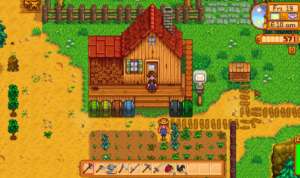
Build a Chest, and Save Every Resource
The first thing I like to do when I start a new game is to chop every single tree around your cabin. Once you have saved about 50 logs of wood, you should craft a chest to store all of your resources.
In the beginning, you have very limited backpack space, so it pays to have extra bit of storage. Although you may not have much to start with, you will find that your backpack will fill up very quickly once you start foraging and farming.
It can be really tempting to throw everything you find in the shipping box, but that is not how you will make money starting out. If you don’t know what a certain item does, it’s best to keep it for later.
This is a handy trick I like to use; create one chest for every season, and one chest for each of the various activities: forage, resources, monster loot, and fishing. That amounts to 8 chests in total. That is a lot of wood (400 in total), but will help you organize your things as you progress through the year. Make sure to place them in a convenient spot, such as the front of your house.
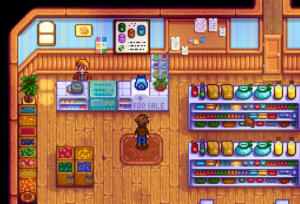
Don’t get that backpack upgrade too soon!
That backpack upgrade looks mighty tempting, doesn’t it? Even though you are getting letters in the mail suggesting to buy it, I advise against buying it too soon. That’s why I suggested the chest to begin with.
The reason I suggest this is because it is expensive for new players. That 2000G can go towards jump starting your farm, and wasting it on bag space is not a good investment.
A single chest comes with 36 Slots of space. Compared to the backpack upgrade of 12 extra slots, it really doesn’t compare. Stardew Valley rewards those who save their items for when they are needed.
If you are concerned about running out of space, the key is to learn how to properly manage your inventory. Don’t know what an item does? Store it away! Try to get in the habit of emptying your backpack after every bout of fishing or foraging. If you try to do everything at once, your pockets will fill up quickly.
One trick I like to try is this: Store your unneeded tools. Raining outside, and you plan on mining all day? You don’t need to bring that hoe or watering can. Going fishing? Why lug around an axe? That in itself will save you a lot of space in the start, just remember where you left your tools, or you will find yourself scrambling to find them.
Dedicate a day’s work to doing one task.
During the first few days of the game, you are pretty much limited in what you can do. The mine is initially closed, so you have no means of mining for stone and ore. You don’t get to start fishing until Day 2. This leaves you with only two real options on Day 1, farming and foraging.
Stardew Valley has a lot of things available for activities. If you try to do everything in one day, you will burn yourself out. Just like real life!
As you progress through the game, you will eventually unlock rewards that greatly help you fulfil the usual tasks, such as sprinklers and crab pots.
Don’t go overboard with Farming
After your first harvest, it can be tempting to use the profits and grow a larger plot of crops, yielding even larger profits. Tilling the soil and watering the plants takes up energy, which is very important in the beginning.
If you plant too much, you will be dedicating a major portion of your time watering every crop you have.
Do you really want to spend all day watering a cornfield? That’s where the sprinklers will come in handy later on.
A good trick to try is to plot out 3×3 spaces for growing crops, just like Harvest Moon 64! This is a simple yet far more manageable way of growing and organizing your crops. Plus, they look nicer in neat little rows!
Try your hand at Fishing!
Fishing is a great way to pass the time while waiting for your harvest. Plus, it pays big in the start, which will give you plenty of money to spend on upgrades and seeds.
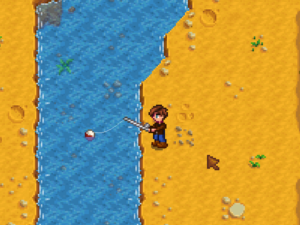
Get a good night’s sleep…
Lastly, and certainly not the least, make sure you give yourself time to rest and recover your energy. If you stay up past 1am, you will recover a small amount of energy the next morning, which will reduce your productivity.
If you are still awake at 2am, you will pass out. Waking up the next morning will leave you with even less energy than simply turning in late, not to mention the fact that you may end up losing money and items. It’s not worth mining for that last level if you lose all of your progress.
… but don’t oversleep either!
Ran out of energy at 12pm? Don’t hit the hay just yet. There are plenty of activities that don’t take up any energy, such as foraging or using your scythe to cut weeds and hay. If you don’t want to waste your food items, you can always take the day to explore the town, talk to people, and enjoy the game for what it is; a pleasant farming simulator!
I hope that this information is helpful. Feel free to browse the site for more guides on Stardew Valley! You can also read my review of the game here!
Happy farming!

